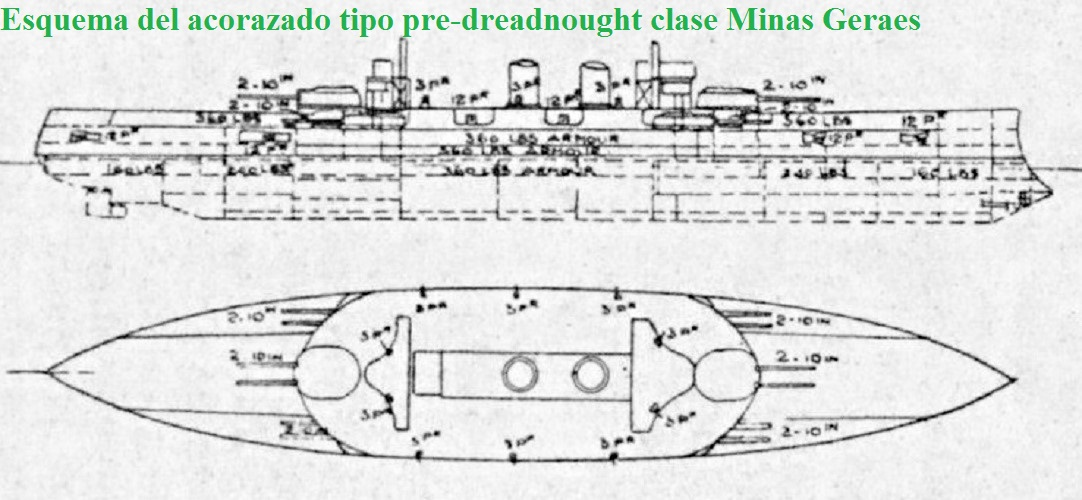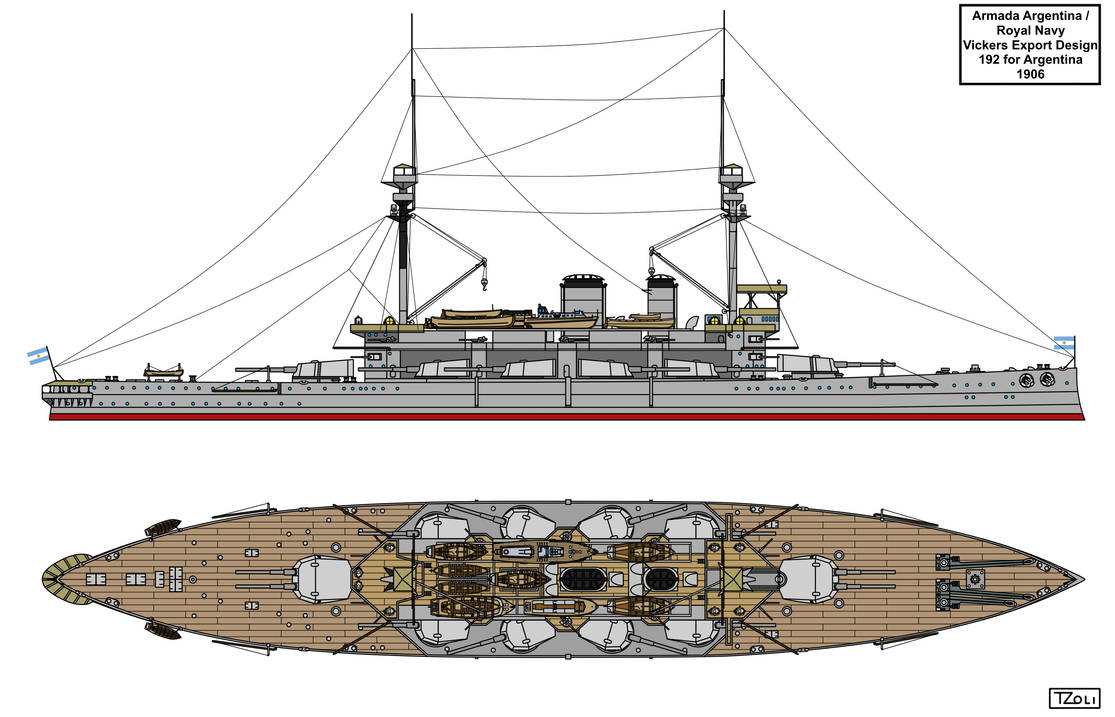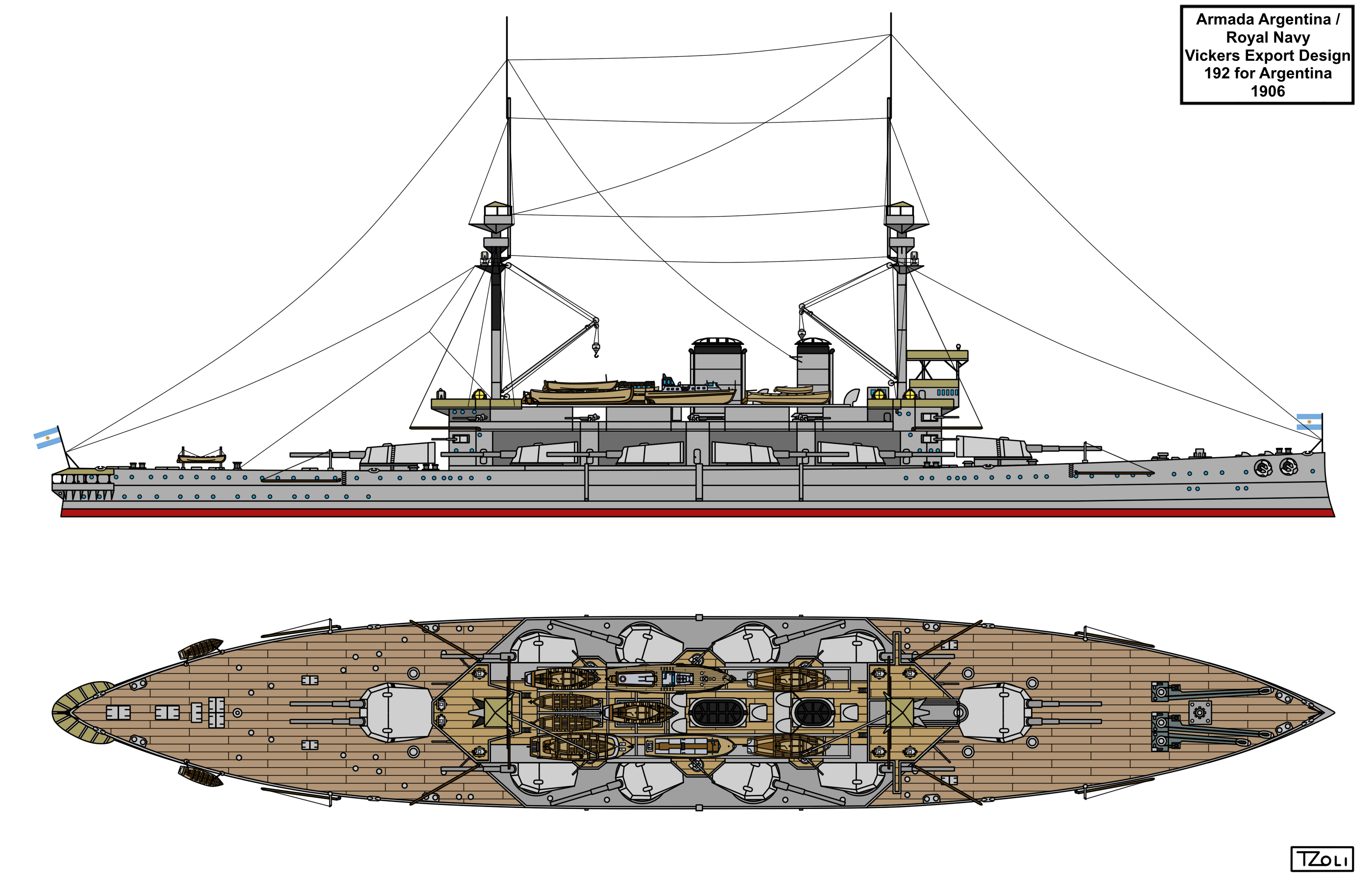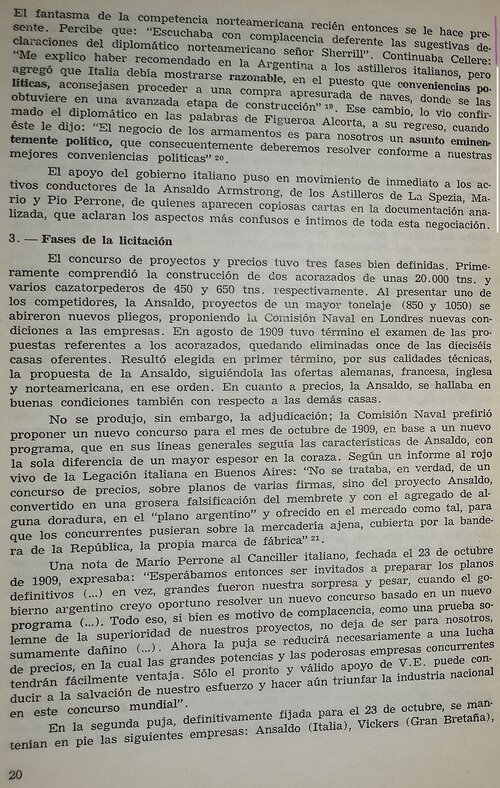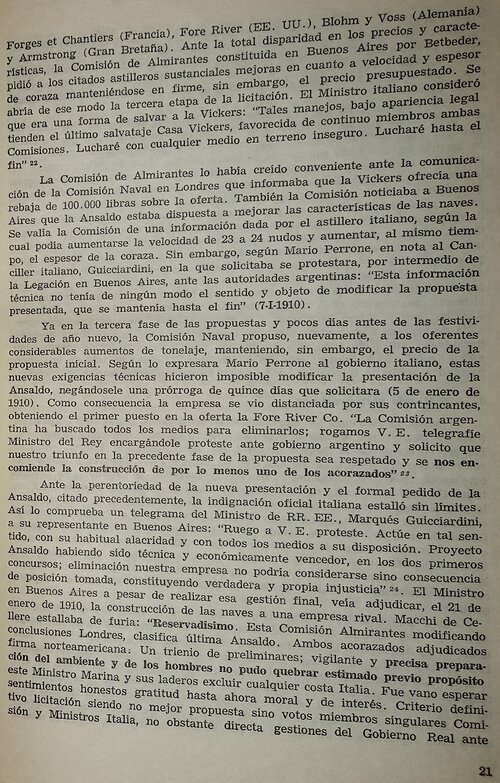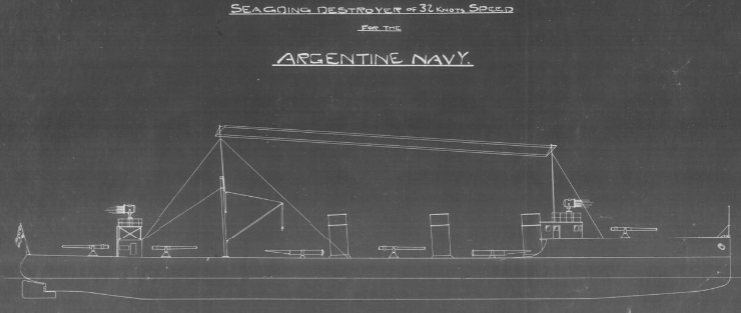Do you guys know any other never-weres or proposed warships for the Argentinian Navy?
I know only these so far:
TR-1400 class Submarines from the 1980's
San Luis class Destroyers of 1910 (British built, finished as Aetos class for Greece)
Mendoza class Destroyers of 1910 (Finished as Aventurier class for France)
Santiago class Destroyers of 1913 (Finished as G101 for Germany)
Thornycroft-White-Yarrow Destroyer design 2.705tons 3x2 120mm of 1947 (Enlarged L class)
Vickers Light Cruiser Designs 758/758A 7.000ton 5x1 / 4x2 152mm of 1919
Bernardino Rivadavia class Armoured Cruisers of 1901 (Finished as Kasuga class for Japan)
Armstrong Armoured Cruiser Design 482 of 6.500ton 5unknown armament of 1906
Vickers Heavy Cruiser Design 1287 8.500ton 3x2 190mm (Vickers's rejected proposal for the Almirante Brown ) of 1927
Ansaldo Battleship Design of 20.000ton 5x3 305mm of 1908
Number of Vickers Battleship designs of 1906:
191 - 12.000tons 2x1 305mm, 6x2 190mm
192 - 12.500tons 6x2 254mm, 14x1 76mm
211 - 14.200tons 4x2 305mm, 20x1 102mm
211A - 14.500tons 4x2 305mm, 6x2,8x1 120mm
211B - 15.200tons 4x2 305mm, 6x2,8x1 120mm
214 - 14.500tons 2x2 305mm, 6x2 190mm, 14x1 102mm
216 - 14.500tons 2x2 305mm, 4x2 254mm, 2x2,16x1 120mm
229 - 16.500tons 3x2 305mm, 4x2 254mm, 20x1 102mm
230 - 15.750tons 2x2 305mm, 4x2 254mm, 28x1 120mm
248 - 17.250tons 2x2 305mm, 4x2 254mm, 24x1 120mm
249 - 17.600tons 2x2 305mm, 4x2 254mm, 24x1 120mm
Designs of 1907:
265 - 19.000tons 4x2 305mm, 4x2 254mm, 24x1 120mm
266 - 17.900tons 4x2 305mm, 4x2 254mm, 20x1 120mm
282 - 18.500tons 6x2 305mm, 24x1 120mm
283 - ???tons 4x2 305mm, 4x2 254mm, 20x1 120mm
286 - ???tons 6x2 305mm
286B - 20.000tons 2x3,4x2 305mm, 4x2,16x1 120mm
287 - ???tons 4x2 305mm, 4x2 254mm
288 - ???tons 6x2 305mm
289 - ???tons 4x2 305mm, 4x2 254mm
290 - ???tons 6x2 305mm
291 - ???tons 4x2 305mm, 4x2 254mm
292 - ???tons 6x2 305mm
293 - ???tons 4x2 305mm, 4x2 254mm
312 - 21.600tons 2x3,4x2 305mm, 4x2,16x1 120mm
332 - ???tons 4x2 343mm, 16x1 152mm
335 - 20.500tons 2x3,4x2 305mm
350 - 19.800tons 6x2 305mm, 16x1 152mm
351 - 19.600tons 4x3 305mm, 16x1 152mm
354 - 21.200tons 4x3,2x2 305mm, 22x1 120mm
355 - 21.350tons 2x2 343mm, 2x3,2x2 305mm
356 - 19.300tons 6x2 305mm, 22x1 120mm
357 - 21.200tons 4x3 305mm, 10x2 152mm
361 - 20.100tons 4x3 305mm, 10x2 152mm
362 - 21.000tons 3x2 343mm, 2x3 305mm, 10x2 152mm
Designs of 1908:
382 - 17.800tons 4x2 305mm, 12x1 152mm, 8x1 76mm
383 - 19.100tons 2x3,2x2 305mm, 14x1 152mm, 8x1 76mm
384 - ???tons 5x2 305mm, 14x1 152mm, 8x1 76mm
388 - 18.400tons 4x2 305mm, 16x1 152mm, 8x1 76mm
389 - 19.500tons 4x3 305mm, 16x1 152mm, 8x1 76mm
392 - ???tons 4x2 305mm, 16x1 152mm, 8x1 76mm
400 - 20.400tons 4x3 305mm, 18x1 152mm, 8x1 76mm
401A - 20.500tons 6x2 305mm, 14x1 152mm, 8x1 76mm
401B - 20.850tons 6x2 305mm, 14x1 152mm, 8x1 76mm
402A - 20.400tons 6x2 305mm, 14x1 152mm, 8x1 76mm
402B - 20.750tons 6x2 305mm, 14x1 152mm, 8x1 76mm
Designs of 1909:
428 - 27.250tons 6x2 305mm, 12x1 152mm, 12x1 102mm
429 - 23.350tons 6x2 305mm, 12x1 152mm, 12x1 102mm
441 - ???tons 6x2 305mm, 12x1 152mm, 12x1 102mm
Number of Armstrong Battleship designs of 1906:
483 - 14.950tons armament unknown
Designs of 1909:
20.500tons 4x3 305mm, 16x1 152mm
Designs of 1910:
610 - 20.500tons 6x2 356mm, 12x1 152mm, 12x1 102mm
611 - 20.500tons 5x2 305mm, 12x1 152mm, 12x1 102mm
612 - 20.500tons 6x2 356mm, 12x1 152mm, 12x1 102mm
Well due to missing data I will not be able to draw all of them but I will try





